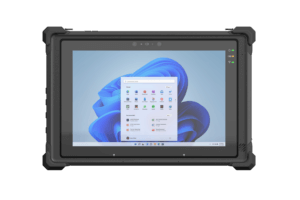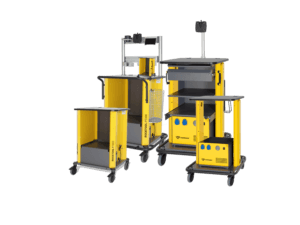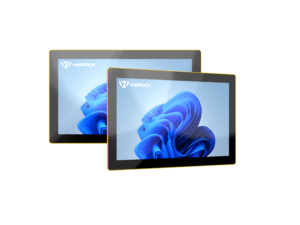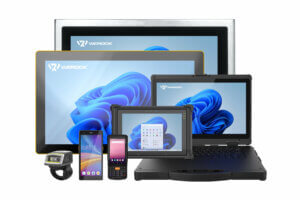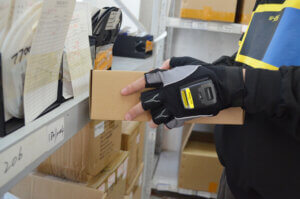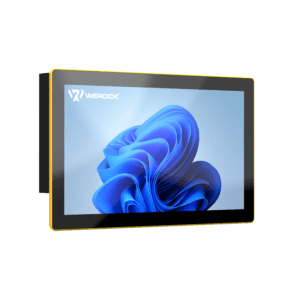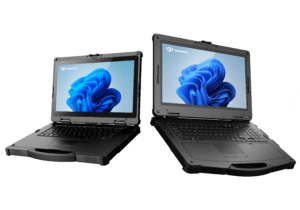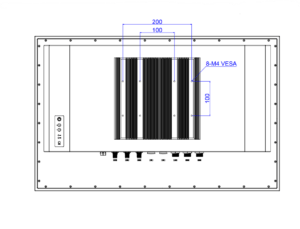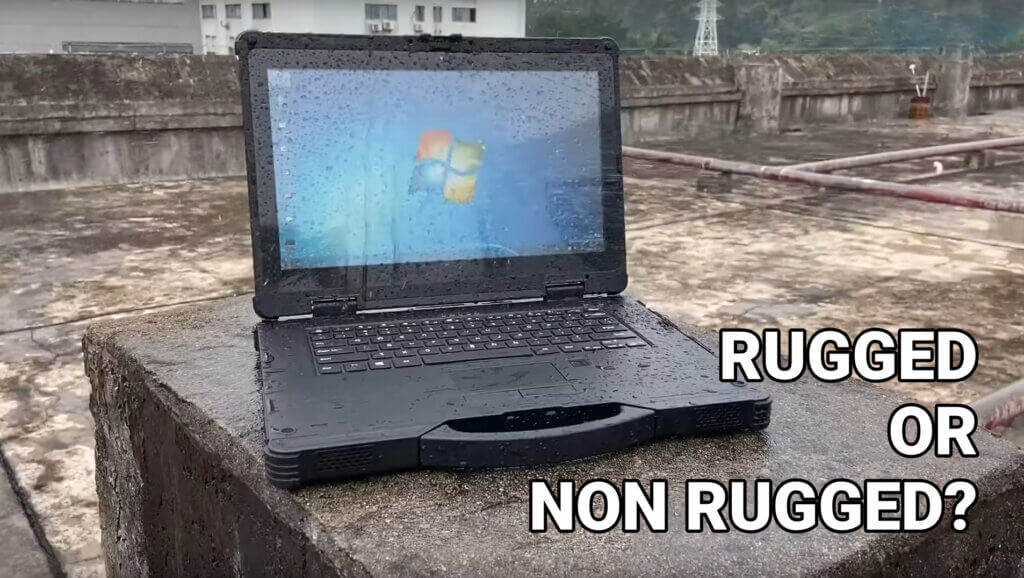Do you need to purchase new rugged notebooks for your business and aren’t sure which models to even consider? Do you feel confused by the numerous offers and brands on the market? Or are you not really familiar with the world of industrial computers and are just looking for an understandable introduction? Then you have come to the right place! In this post, you will learn about the basic features and characteristics of a rugged notebook. Furthermore, we will show you what aspects you should consider before buying the rugged notebooks and what questions you should ask yourself. With the help of this buying guide, you will be able to keep an overview and find exactly the right notebooks for your needs. So stay tuned!
Where or how do you want to use the devices?
Before any further considerations, you should first be clear about the purposes for which you need the notebooks in the first place. This is essential as there are significant differences in functionality, performance, power, feature and price among computers for different applications. Do you want to run simple or complex applications? Or do you want to buy mission notebooks for specific work environments?
Furthermore, you should ask yourself in what kind of environments the new devices will be used. Different environments place different demands on the devices and the devices should have the appropriate features for the respective requirements. In addition, models with different features can differ significantly in price.
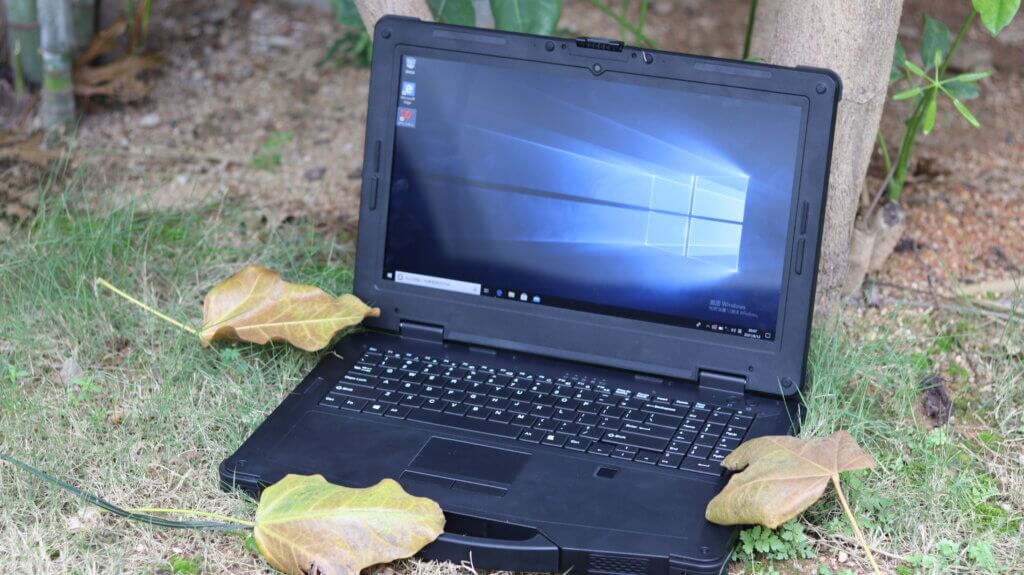
General points to consider before buying notebooks
Of course, rugged notebooks offer all the features of a normal notebook, but they are also equipped with the essential features if the devices are “really” to be used outdoors. Most notebooks are great for use in the office or in conference rooms, but on the road they quickly show significant weaknesses. That’s why we’ll first briefly outline the general points to consider when buying a notebook. Later, we’ll get into the details of rugged notebooks. These points include the features of a notebook that should serve as a basis for each model. Thus, they can be roughly broken down to processors, RAM, operating system, battery capacity, ports and connectivity, and warranty.
Generally, notebooks are available in different performance classes, which are reflected in different processor and working memory equipment. Performance-intensive tasks include video editing, image editing, design, work over streaming, and tasks that need to be performed over large and complicated industrial programs. In these cases, you should opt for high-quality processors and large memory to prevent workflows from slowing down over time or being forced to stop halfway due to device failure. If you have particularly graphics-intensive activities (e.g. video editing), you should make sure that your device has a dedicated graphics card. If, on the other hand, you or your colleagues only want to do simple and less complex office work (e.g. writing offers, spreadsheets, looking at and editing plans) on the notebook, then you don’t need such powerful processors and large working memories. Especially in the field, a balanced choice of processor makes sense, because bigger processors consume more power and reduce the battery life.
When it comes to the operating system, the decision is usually relatively easy to make. Buyers who want to create a pleasant and at the same time mobile workstation opt for Windows – the most widespread operating system at the moment. It is the standard for all common desktop applications and programs. Alternatively, there is still the Linux system. Due to the elimination of licensing costs, these devices are a bit cheaper, but they have limitations: Most programs that can be bought in stores are programmed for Windows and can therefore only be run here. Finally, there is Apple’s operating system, the Mac OS. This is exclusively available for Apple devices and cannot be found on rugged notebooks. In summary, Windows is currently the best option for professional IT use, as Linux is usually only considered for special application scenarios.
If you or your employees want to use the devices primarily stationary or in the office in the future, you do not necessarily have to have a large battery. However, if you’re looking for models for on the go, the batteries should have a longer lifespan so that the user doesn’t have to keep charging the device. If the notebook will be used outdoors all day, a “hot-swappable” battery is also recommended. Here, the employee can swap his empty battery for a full one during use and the computer doesn’t have to be switched off in the process.
The notebooks should also have sufficient connection and connectivity options to ensure that work processes run smoothly. Ask yourself: Which interfaces do I need for my application and which ones can I do without? For example, do I need an HDMI port for an external monitor? Do I need a LAN interface for the company network or for controlling devices, or is the WLAN connection sufficient? Is a serial interface like RS232 necessary or do I only need USB ports?
Lastly, keep the warranty programs in mind when fluctuating between different products. This point always applies – regardless of consumer or industrial devices. Servicing or repairing the computer can be really expensive if the defect is not covered by the warranty. So take a close look at whether the warranty program only covers manufacturing defects or also self-inflicted damage. The duration of the warranty or guarantee also plays a major role in the decision.
One thing should have become clear by now: The selection of a suitable notebook depends on the specific application area, the work environment and the individual requirements of the device. Therefore, the very first thing you should do is to define and narrow down your concrete needs as sharply as possible before even going into the selection and finally the comparison.
One thing should have become clear by now: The selection of a suitable notebook depends on the specific field of application, the work environment and the individual requirements for the device. Therefore, the very first thing you should do is to define and narrow down your concrete needs as sharply as possible before even going into the selection and finally the comparison.
We don’t want to keep this article too rough and general; on the contrary. As mentioned at the beginning, we will focus exclusively on rugged notebooks, which are primarily used for professional use in industrial or other rough and tough environments. These devices are therefore less or only to a small extent found in the office, but rather in the field, in production halls, workshops, in the trades, etc. If this fully or in part applies to you, then the following information will further help you reach your goal – the perfect rugged notebook.
We will present you with the specifications that these notebooks should have for different work areas and what criteria are important when buying.
What is a rugged laptop and how is it certified?
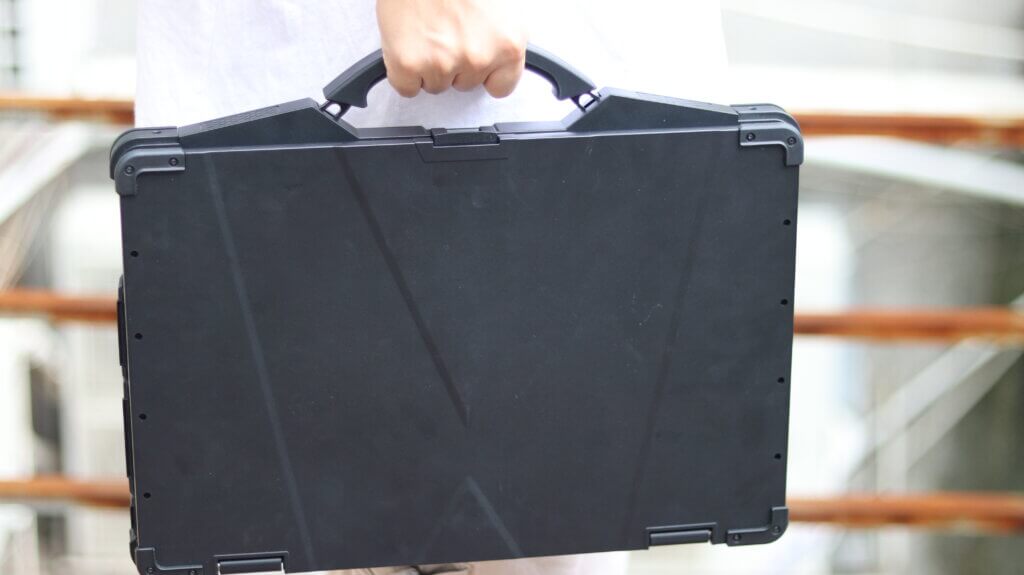
For use in the industries mentioned above, you usually need rugged computers for specific use scenarios. But, what actually makes a rugged laptop? Not every computer that is quite rugged can be called a rugged (or rugged) computer. True, there is no clear definition of a computer’s ruggedness; in general, ruggedness – from the user’s perspective – is understood to be the specific ability of the device to continue to function in a wide variety of extreme work environments and to withstand adverse working conditions. But what are these “adverse working conditions”? They include: ingress of water, dust and dirt; direct sunlight; extreme temperatures or thermal shocks; vibration, shocks and even drops, etc.
Rugged devices are divided into four categories, each indicating different levels of ruggedness, namely: Semi Rugged, Fully Rugged, Ultra Rugged and Military Rugged. Using globally recognized ruggedness standards testing procedures, one can determine which category the device is in and how rugged it is. The two most important tests or standards are IP protection standard and the US military standard MIL-STD-810.
The IP protection standard is a system with two numbers to define the protection against foreign bodies and liquids. The first number stands for foreign bodies, the second for liquids. Below you will find a corresponding overview:
IP Ingress protection against foreign bodies (First Number)
- 0_ No protection
- 1_ Protected against objects larger than 50 mm (e.g. a hand)
- 2_ Protected against objects larger than 12.5 mm (e.g. a finger)
- 3_ Protected against objects larger than 2.5 mm (e.g. a screwdriver)
- 4_ Protected against objects larger than 1 mm (e.g. wire)
- 5_ Keeps out enough dust to prevent failure. However, limited dust ingress is permitted. Does not interfere with operation of the unit.
- 6_ Dust-tight (no ingress).
- X_ Not tested. You will see this if the device has been tested for liquids but not for solids; e.g., IPX7.
IP Protection against liquid ingress (Second Number)
- _0 No protection
- _1 Protection against vertically falling water drops
- _2 Protection against water drops falling at an angle (up to 15 degrees)
- _3 Protection against splashing water (up to 60 degrees)
- _4 Protection against splashing water from all directions
- _5 Protection against water jets from all directions
- _6 Protection against strong jets of water
- _7 Protection against temporary immersion in water (up to 30 minutes)
- _8 Protection against permanent immersion in water (waterproof)
- _9 Protection against high pressure and steam jet cleaners
- _X Not tested.
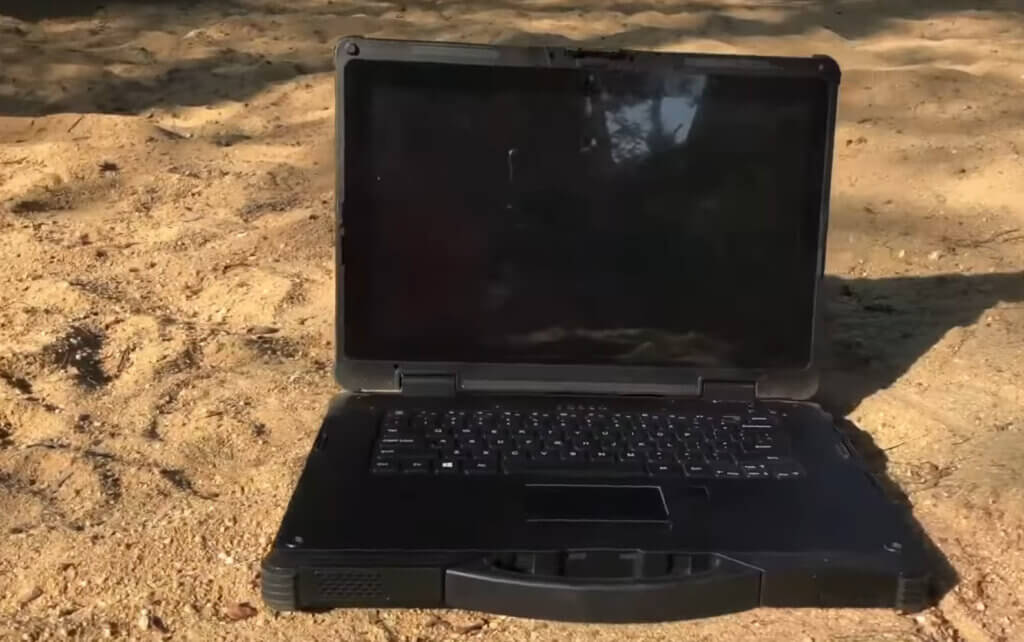
For example, an IP67 certified device is completely dust-proof and can withstand temporary immersion in water for up to 30 minutes. Normal notebooks usually fall into the “IP20” category and have no further protection. Semi-rugged notebooks often already have protection to “IP53” while fully-rugged devices are completely water and dustproof to “IP65”.
MIL-STD-810 is a more comprehensive standard that verifies and certifies the durability of the device through numerous rigorous testing procedures. For example, low air pressure, extreme temperatures, sunlight, rain, vibration, mechanical shock, drops, etc. are tested.
You should always keep the environmental factors just mentioned in mind when making your selection. In everyday work, for example, direct sunlight or temperature shocks are not uncommon. And it is precisely these features that distinguish the rugged from the normal computer. A certified rugged computer can therefore withstand the harshest operating environments and thus serve a much wider range of applications than a conventional end-user computer. For example, operating temperatures of -20°C to +60°C are also feasible, as in the case of use in deep-freeze warehouses or firefighting operations. It is also not uncommon for a device to fall off. Be it because it slips out of your hand, you trip or you simply put the device down carelessly. Accidentally dropping such a computer is also no problem (sometimes even with a drop height of up to 1.2m).
Important features your rugged notebook should still have
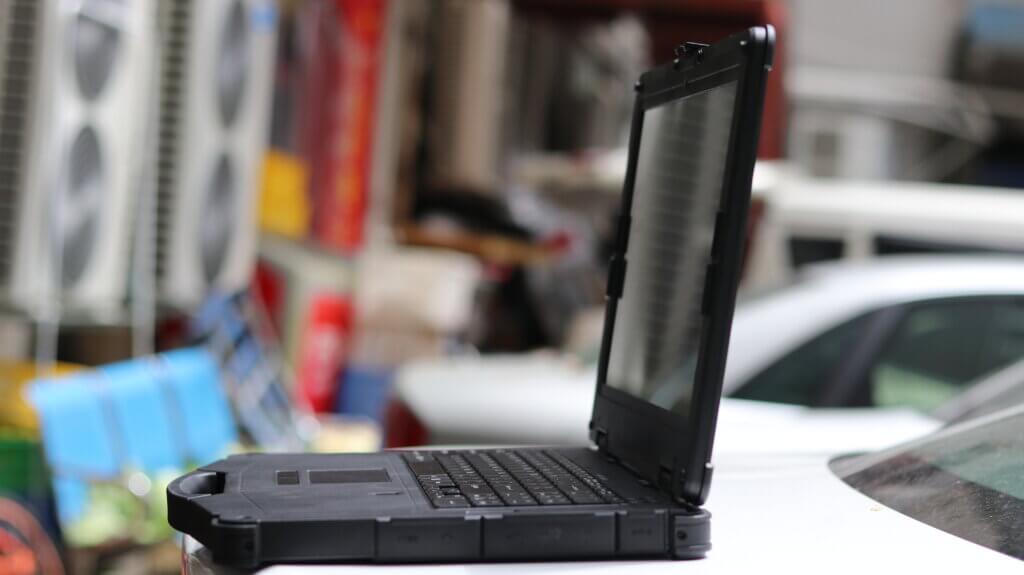
There are other criteria that have nothing to do with the ruggedness of the device, but are also crucial for the performance and durability of a rugged notebook.
Battery: Think about whether you need particularly large, powerful batteries. When used in industry, firefighting, utilities, emergency services, disaster relief, and many other sectors where constant field service is unavoidable, users rely on an especially powerful battery. In such sectors, a battery life of 8 to 9 hours is an advantage.
Depending on the field of application, the hot-swap function can provide crucial added value. This function makes it possible to replace the battery during operation without having to shut down the notebook. This means that the workflow is not interrupted and important data is not lost.
Ports and connectivity: Industrial notebooks need more or even special connectivity options to cover a wide range of application scenarios. These are, for example, several USB ports, serial interfaces or even extra charging ports. Depending on the device, these are already included ex-works or can at least be added optionally.
For certain fields of work, stable and fast mobile connectivity is important so that retrieving and transferring data on the go works without problems.
Thus, a good rugged notebook combines a high degree of robustness, stability, mobility as well as flexibility and thus offers many more application possibilities than a stationary PC.
Accessories: The available accessories should also be considered in the purchase decision. Consider, for example, is a system needed to attach your device to the vehicle? For emergency services like police and fire departments, a vehicle mount with charging capability will be helpful because they often use power-hungry applications like GPS and navigation on the go.
Depending on the intended use, a touchscreen, input pen or even anti-reflective display foils could also be interesting. Think about what is important to you, what makes your work easier. Many devices can be specifically adapted to your personal usage needs.

Conclusion
Finding suitable IT solutions for your business is certainly not the easiest task; sometimes it can be very confusing to consider many factors at once and to anticipate and avoid potential problems in advance.
With our buying guide, you now already have the most important aspects in mind and can confidently start your “hunt” for rugged notebooks. We ourselves also offer various rugged notebooks for different requirements, just have a look. We will be happy to answer any questions you may have.


